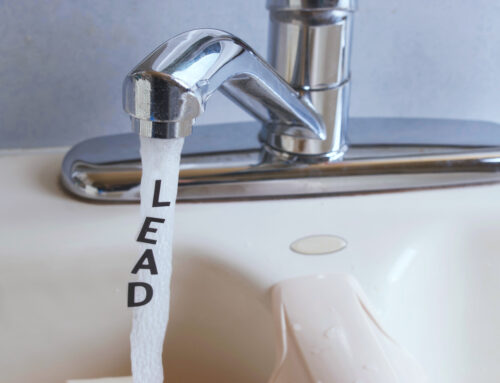
PFCs or more specifically, PFAs and PFOs are the subject of several ongoing studies for drinking water contamination in Minnesota and throughout the US.
These chemical compounds are considered an “emerging contaminant”, which simply means that the risk and effects that they have on the human body is not yet known. The only conclusive thing that is known is that they are making their way into our water and then into our bodies.
What are PFCs?
PFCs are a group of man made chemical compounds that can refer to “perfluorinated chemicals” and “perfluorocarbons”, or PFCs for short. Although perfluorinated chemicals and perfluorocarbons can be grouped together there are distinct differences.
To improve on the clarity and differentiation of different types of PFCs, the EPA and other scientific bodies have broken them up into smaller subsets – PFAS (perfluoroalkyl substances), PFOA (perfluorooctanoic acid), and PFOS (perfluorooctane sulfonate).
Where do PFCs come from?
You may not have heard of them before or have seen them on a product label, but PFCs are all over. PFCs or the further classified PFAS, PFOA, and PFOS are man-made chemical compounds that are used in the manufacturing of consumer goods.
PFCs are most commonly seen in materials and goods that prevent adhesion of water, grease, and grime:
- Teflon® pots and pans
- Non stick, stain and grease resistant food packaging like fast food wrappers, pizza boxes, and candy wrappers
- Personal hygiene products like dental floss and shampoos
They can also be found in other non-consumables materials:
- Water resistant and shedding clothing
- Fire fighting foam
- Cleaning products
PFCs are also found in:
- Drinking water
- Food packaged in products containing PFCs or manufactured by equipment containing PFCs
- Living organisms like fish, animals, and even in the human body
Why are PFCs / PFAS, PFOA, PFOS a problem?
PFAS have been manufactured and used in a variety of industries around the globe, including in the United States since the 1940s. PFOA and PFOS have been the most extensively produced and studied of these chemical groups.
Both PFOA and PFOS are very persistent as they don’t break down and tend to accumulate over time. This means that the chemicals will accumulate over time in the environment, in animals, and in your own body. There is evidence that links people exposed to some sets of PFAS to have adverse health effects. As noted by the CDC’s Agency for Toxic Substances and Disease Registry, these effects can:
- Affect growth, learning, and behavior of infants and older children
- Lower a woman’s chance of getting pregnant
- Interfere with the body’s natural hormones
- Increase cholesterol levels
- Affect the immune system
- Increase the risk of cancer
The most-studied PFAS chemicals are PFOA and PFOS. Studies indicate that PFOA and PFOS can cause other serious health issues. These health issues include reproductive and developmental, liver and kidney, and immunological effects in laboratory animals. Both chemicals have caused tumors in animals. The most consistent findings are increased cholesterol levels among exposed populations, with more limited findings related to:
- Low infant birth weights,
- Effects on the immune system,
- Cancer (for PFOA), and
- Thyroid hormone disruption (for PFOS)
An important thing to remember is that PFAS are a relatively new chemical with their manufacturing boom taking place in the 1970s and 1980s and it hasn’t been until the early 2000s that we have found exposure to PFAS in our drinking waters. The research of the effects will continue to be ongoing and limiting exposure should be taken seriously.
With that said, there continues to be a tremendous amount of effort going on to learn more on the impacts of PFCs. On a national level, the 2017 National Defense Authorization Act includes a 5 year study to be done by the CDC. Locally in Minnesota additional resources are being made available through settlements such as the 2018 State of Minnesota and 3M settlement to have a high priority to ensure clean drinking water is available to residents of the Minneapolis and St. Paul East Metro.
How do PFAS get into Minnesota’s drinking water?
The most common source of PFC/PFAS/PFOS contamination in drinking water is from hazardous waste disposal. Over time the contaminants at the dump sites make their way into the groundwater. These locations are known as State Superfund sites which are generally quarantined off from public access and have been cleaned up, need to be cleaned up or cleanup is underway.
Here is a complete list of Minnesota Superfund sites and summaries.
How do I filter PFCs from my drinking water?
Fortunately there are water filter and purification technologies emerging that are proven to remove PFCs, such as the whole house PIONEER water filter system by Enpress. Not only does PIONEER reduce and remove PFOA/PFOS from water is also filters heavy metals such as lead, and other harmful contaminants like chlorine and chloramine.
Are you concerned about PFCs in your water?
If you are concerned about PFCs in your Minneapolis, St Paul drinking water contact Merle’s Water Conditioning for a FREE water quality test. We will tell you exactly what contaminants are in your water and how we can help to remove it.








